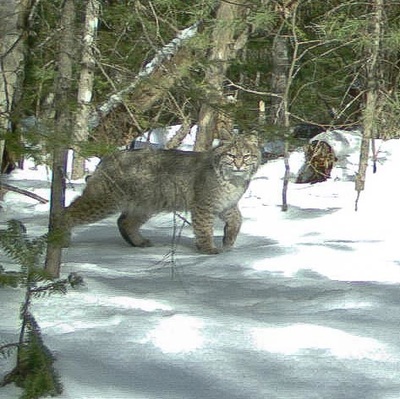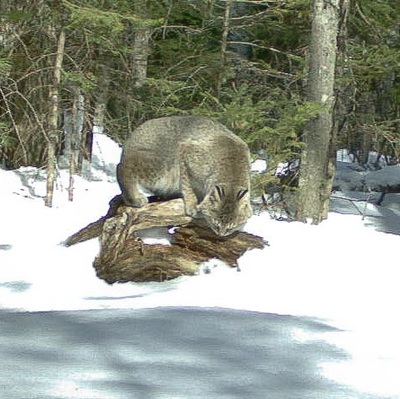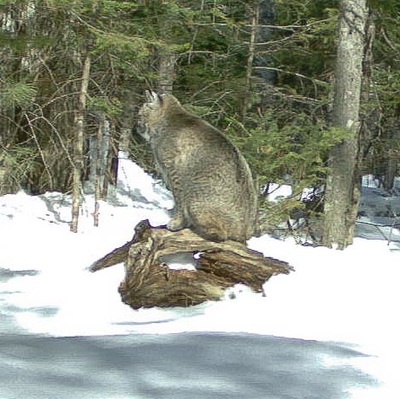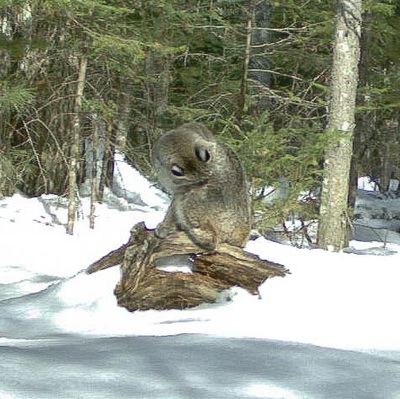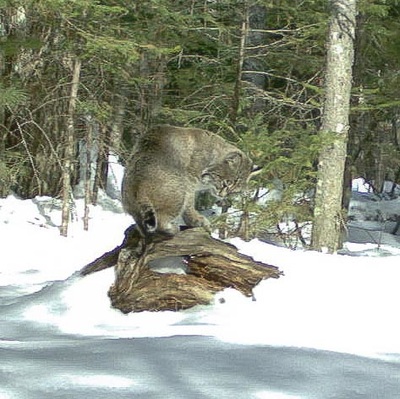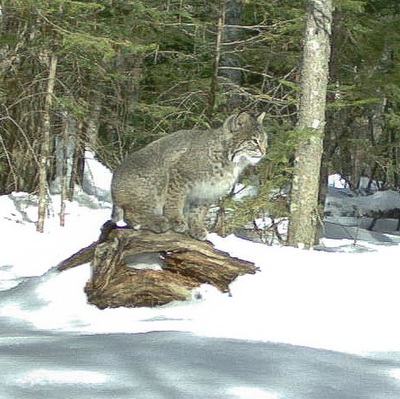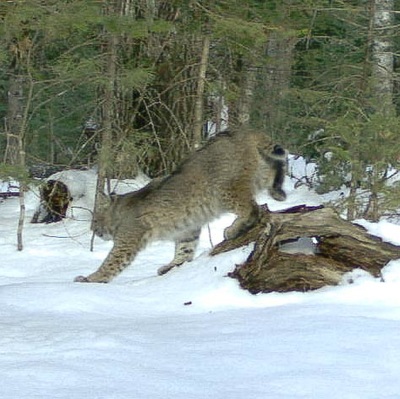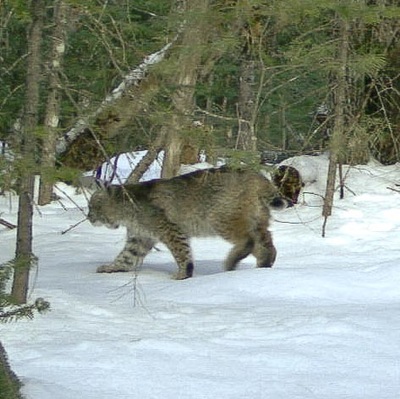14 February 2013
Bobcat
Lynx rufus
Orono, Maine
Pat Hinds sent in these photos taken on a path behind her home in Orono. The bobcat spent 13 minutes sitting on the stump. The camera was a Reconyx HC600 attached to a tree.
Bobcats are solitary animals that live in ranges of approximately five square miles, depending on their gender and the availability of prey. They prefer hare or rabbit for food but will also eat insects, rodents, birds and small mammals. They move around their range in late evening and early morning, marking their territory boundaries with fecec and urine or by clawing trees. Studies have shown they travel between 2 to 7 miles each night and use temporary shelters when away from their den.
Bobcat
Lynx rufus
Orono, Maine
Pat Hinds sent in these photos taken on a path behind her home in Orono. The bobcat spent 13 minutes sitting on the stump. The camera was a Reconyx HC600 attached to a tree.
Bobcats are solitary animals that live in ranges of approximately five square miles, depending on their gender and the availability of prey. They prefer hare or rabbit for food but will also eat insects, rodents, birds and small mammals. They move around their range in late evening and early morning, marking their territory boundaries with fecec and urine or by clawing trees. Studies have shown they travel between 2 to 7 miles each night and use temporary shelters when away from their den.

